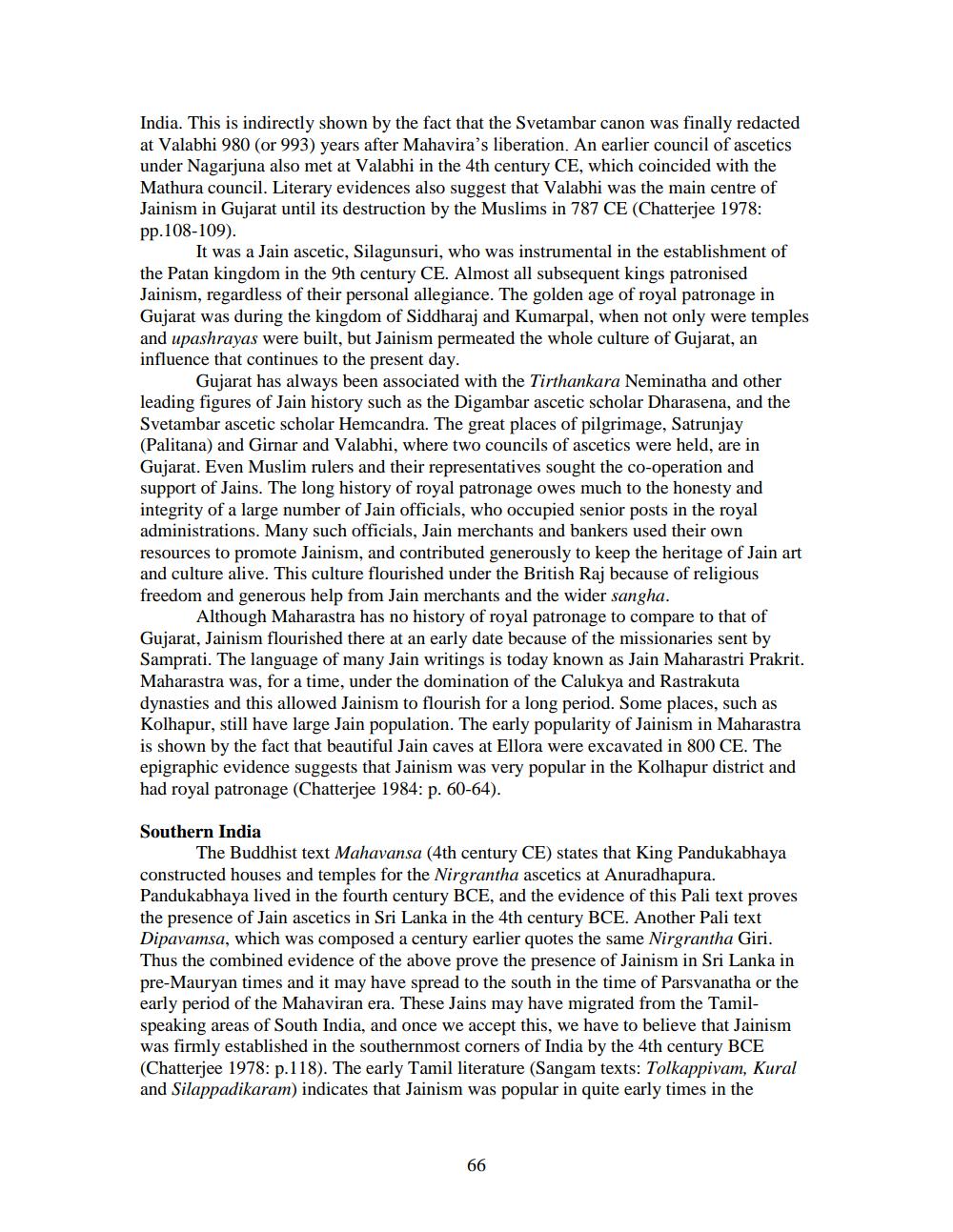________________
India. This is indirectly shown by the fact that the Svetambar canon was finally redacted at Valabhi 980 (or 993) years after Mahavira's liberation. An earlier council of ascetics under Nagarjuna also met at Valabhi in the 4th century CE, which coincided with the Mathura council. Literary evidences also suggest that Valabhi was the main centre of Jainism in Gujarat until its destruction by the Muslims in 787 CE (Chatterjee 1978: pp. 108-109).
It was a Jain ascetic, Silagunsuri, who was instrumental in the establishment of the Patan kingdom in the 9th century CE. Almost all subsequent kings patronised Jainism, regardless of their personal allegiance. The golden age of royal patronage in Gujarat was during the kingdom of Siddharaj and Kumarpal, when not only were temples and upashrayas were built, but Jainism permeated the whole culture of Gujarat, an influence that continues to the present day.
Gujarat has always been associated with the Tirthankara Neminatha and other leading figures of Jain history such as the Digambar ascetic scholar Dharasena, and the Svetambar ascetic scholar Hemcandra. The great places of pilgrimage, Satrunjay (Palitana) and Girnar and Valabhi, where two councils of ascetics were held, are in Gujarat. Even Muslim rulers and their representatives sought the co-operation and support of Jains. The long history of royal patronage owes much to the honesty and integrity of a large number of Jain officials, who occupied senior posts in the royal administrations. Many such officials, Jain merchants and bankers used their own resources to promote Jainism, and contributed generously to keep the heritage of Jain art and culture alive. This culture flourished under the British Raj because of religious freedom and generous help from Jain merchants and the wider sangha.
Although Maharastra has no history of royal patronage to compare to that of Gujarat, Jainism flourished there at an early date because of the missionaries sent by Samprati. The language of many Jain writings is today known as Jain Maharastri Prakrit. Maharastra was, for a time, under the domination of the Calukya and Rastrakuta dynasties and this allowed Jainism to flourish for a long period. Some places, such as Kolhapur, still have large Jain population. The early popularity of Jainism in Maharastra is shown by the fact that beautiful Jain caves at Ellora were excavated in 800 CE. The epigraphic evidence suggests that Jainism was very popular in the Kolhapur district and had royal patronage (Chatterjee 1984: p. 60-64).
Southern India
The Buddhist text Mahavansa (4th century CE) states that King Pandukabhaya constructed houses and temples for the Nirgrantha ascetics at Anuradhapura. Pandukabhaya lived in the fourth century BCE, and the evidence of this Pali text proves the presence of Jain ascetics in Sri Lanka in the 4th century BCE. Another Pali text Dipavamsa, which was composed a century earlier quotes the same Nirgrantha Giri. Thus the combined evidence of the above prove the presence of Jainism in Sri Lanka in pre-Mauryan times and it may have spread to the south in the time of Parsvanatha or the early period of the Mahaviran era. These Jains may have migrated from the Tamilspeaking areas of South India, and once we accept this, we have to believe that Jainism was firmly established in the southernmost corners of India by the 4th century BCE (Chatterjee 1978: p.118). The early Tamil literature (Sangam texts: Tolkappivam, Kural and Silappadikaram) indicates that Jainism was popular in quite early times in the
66




